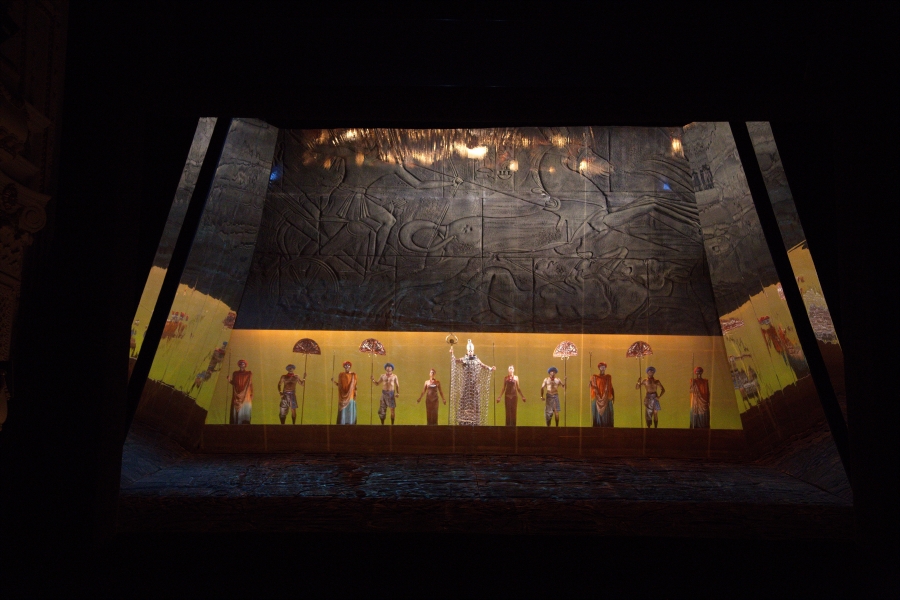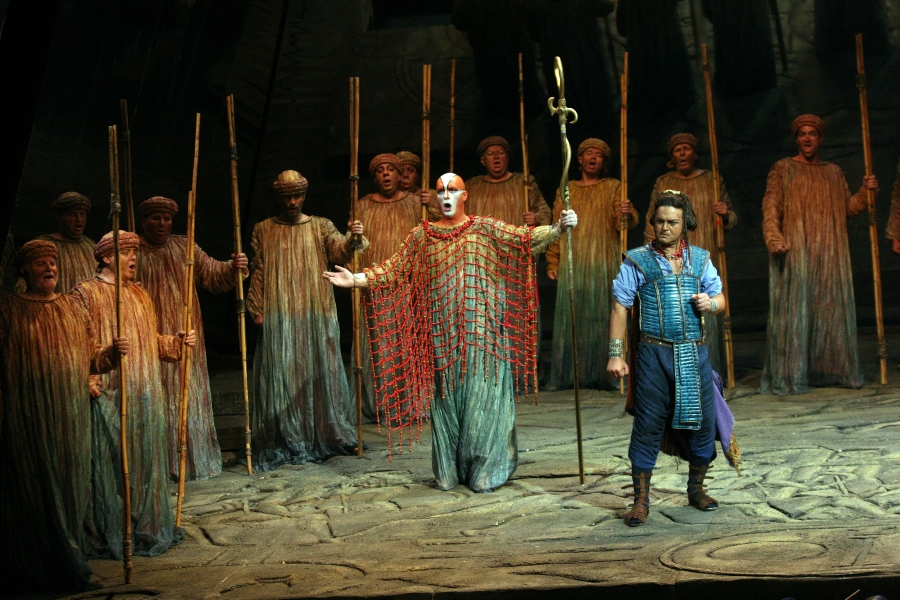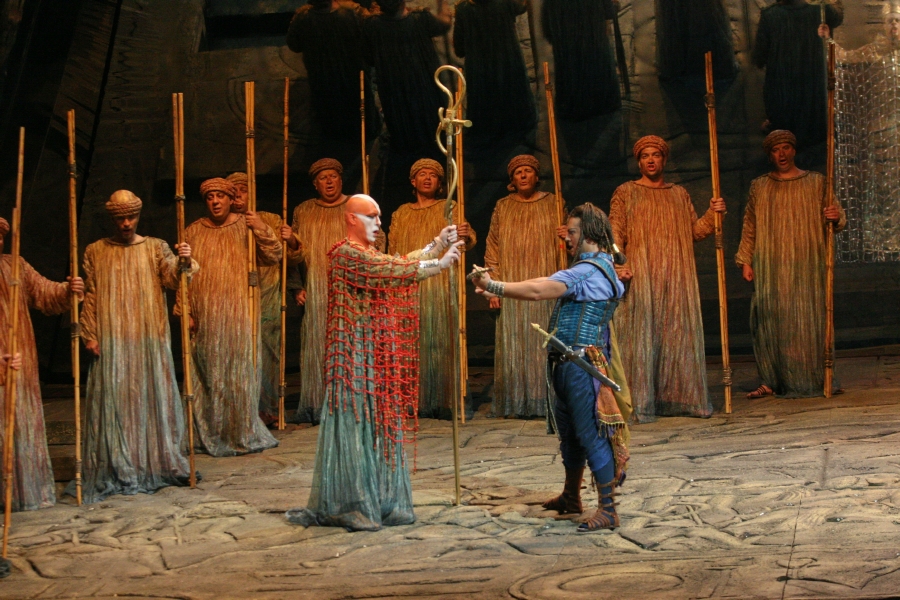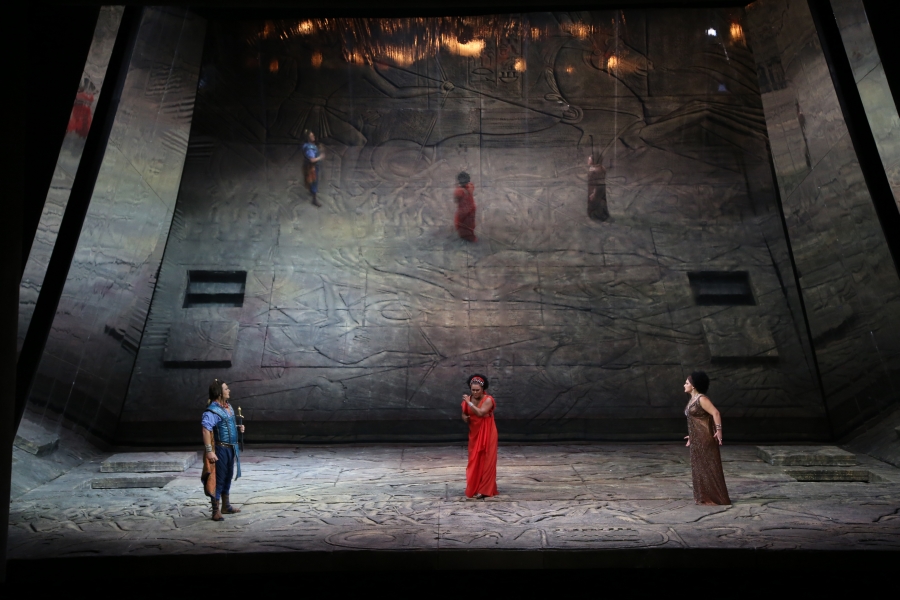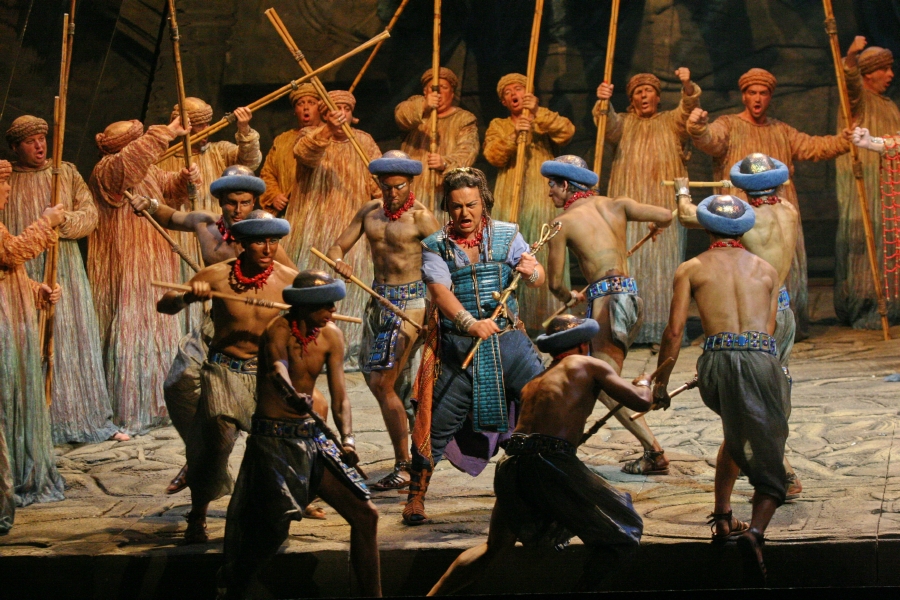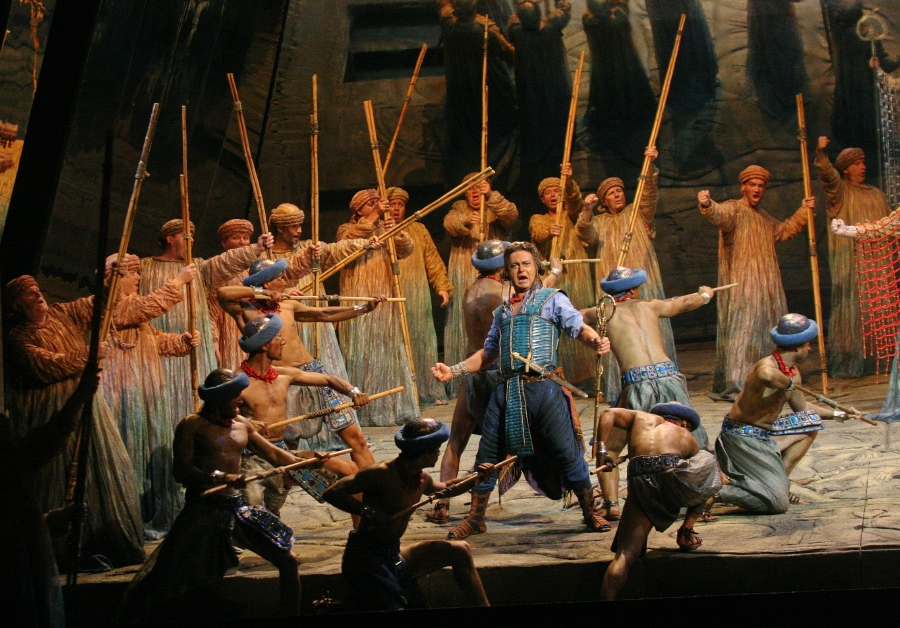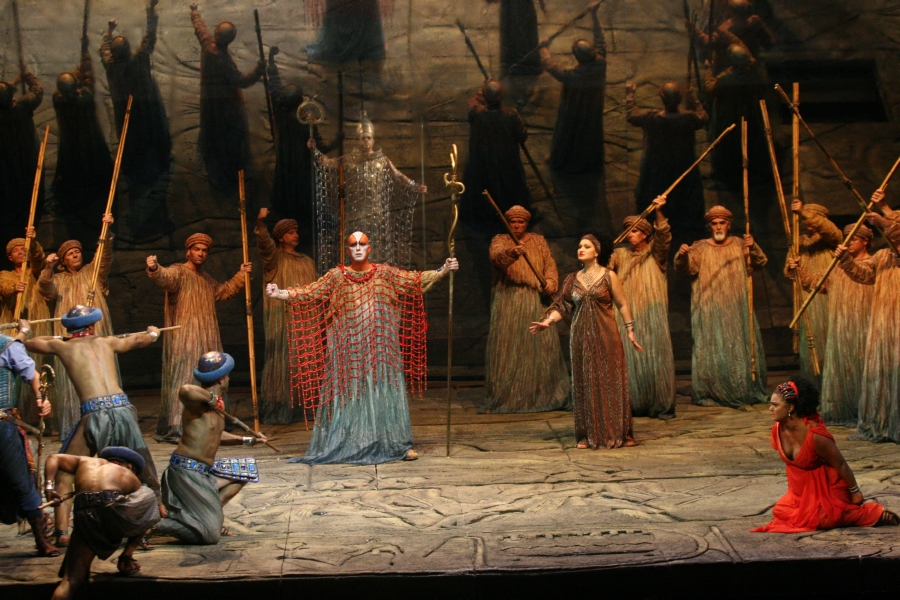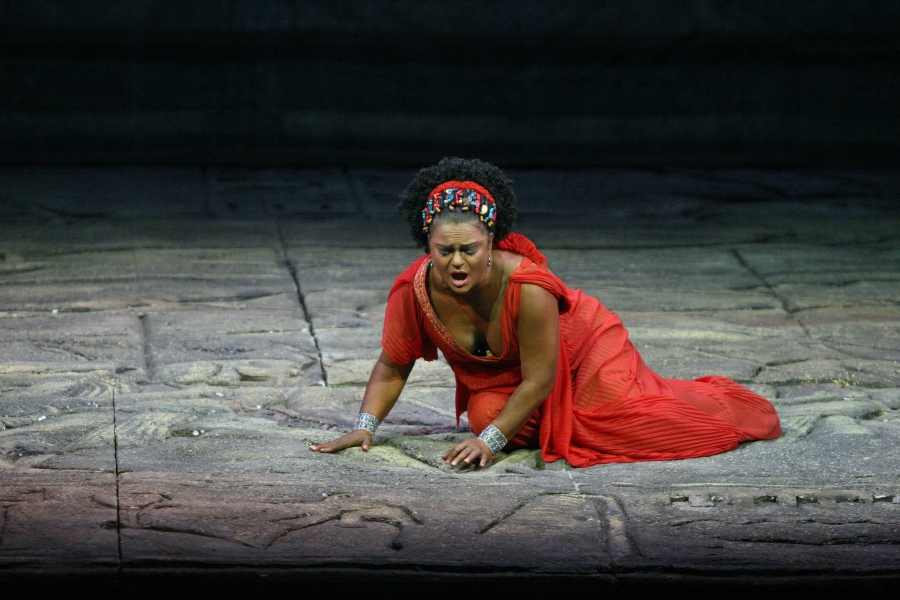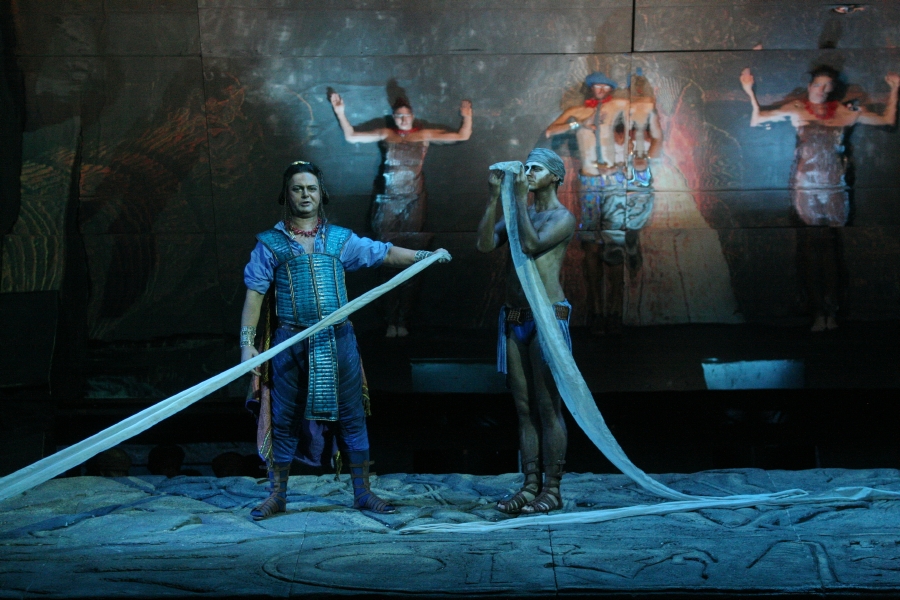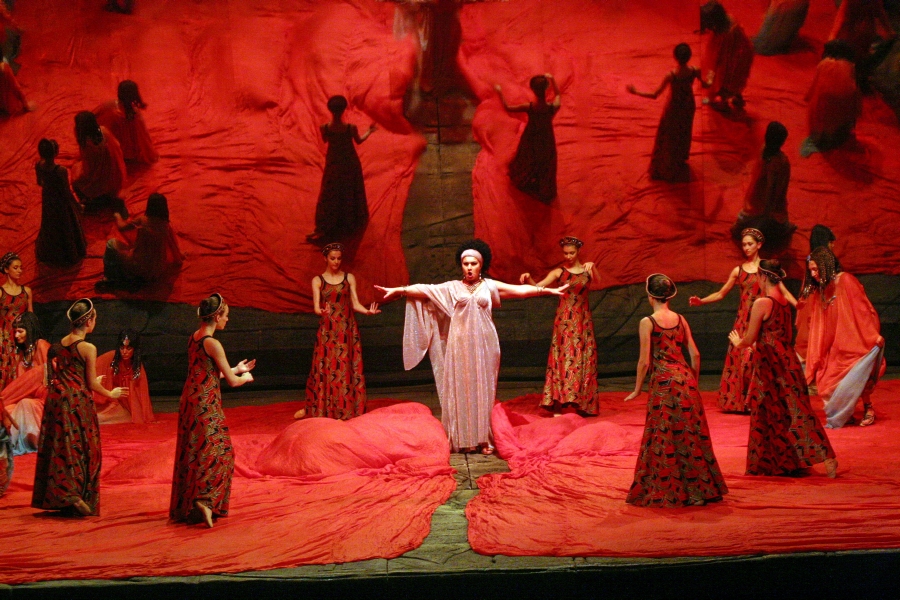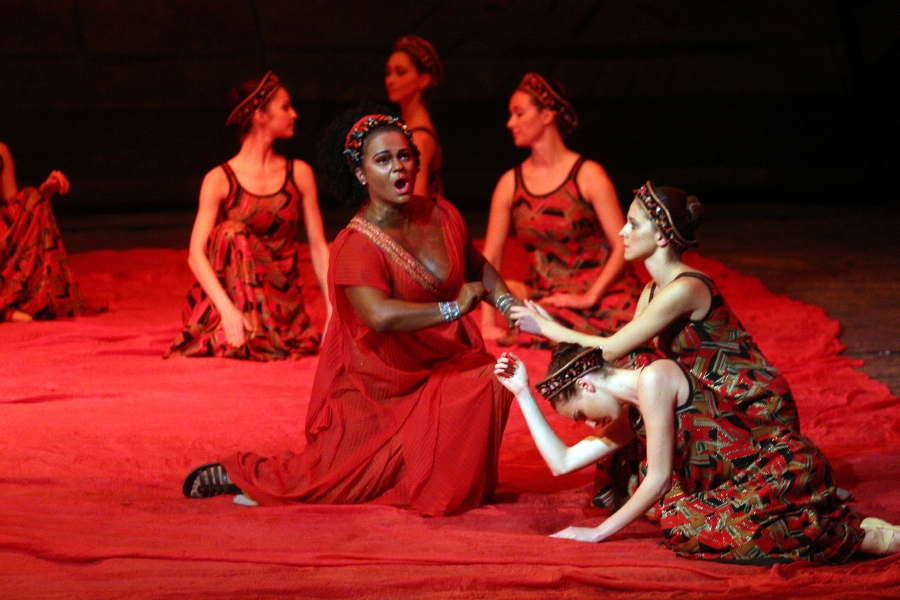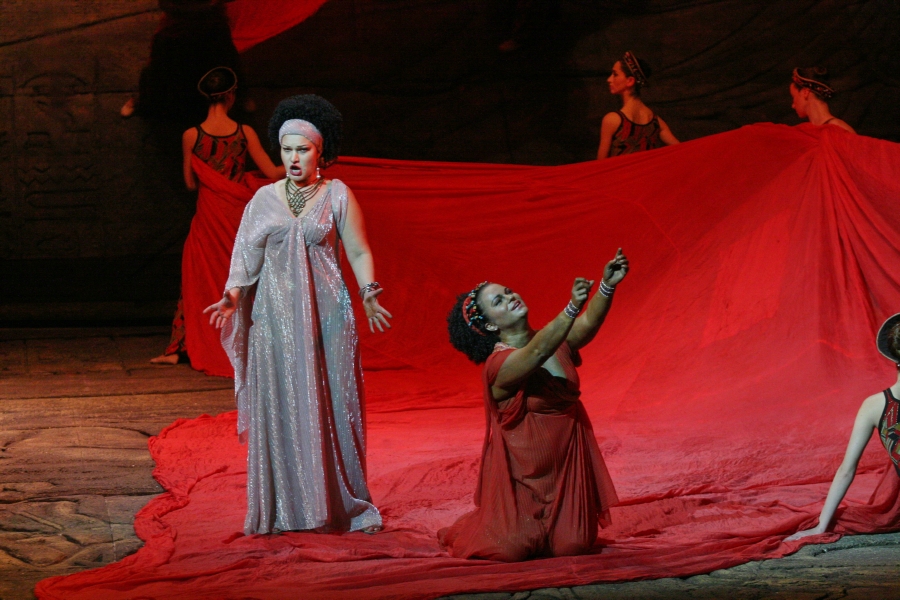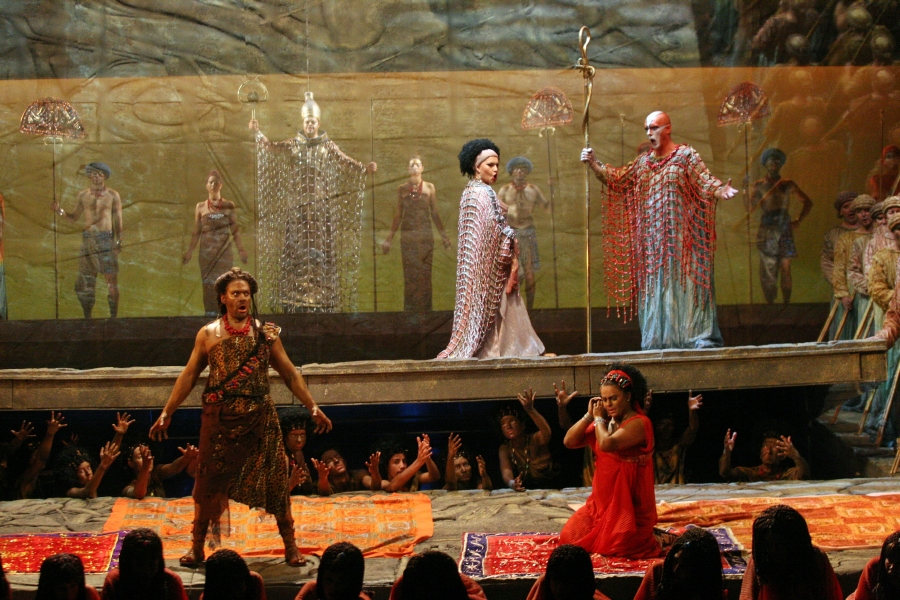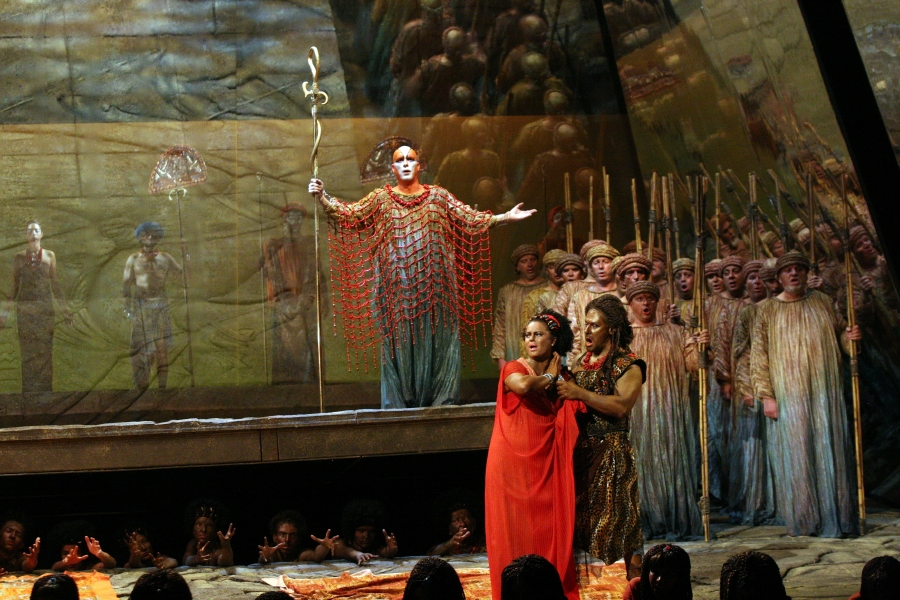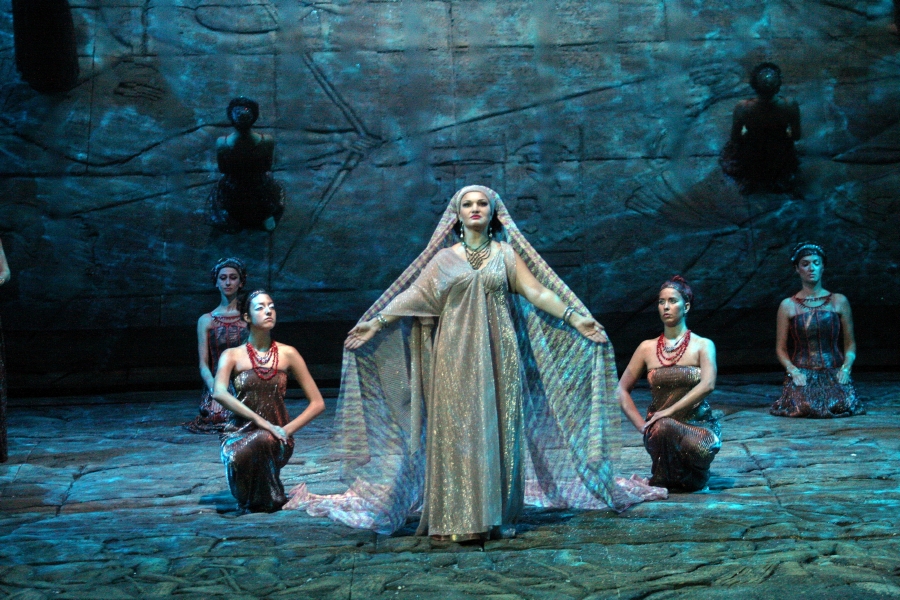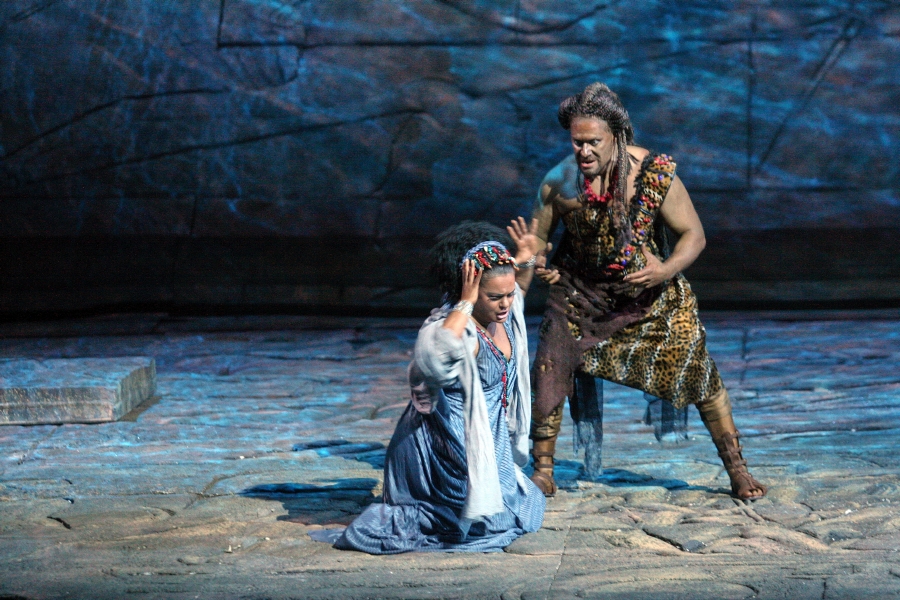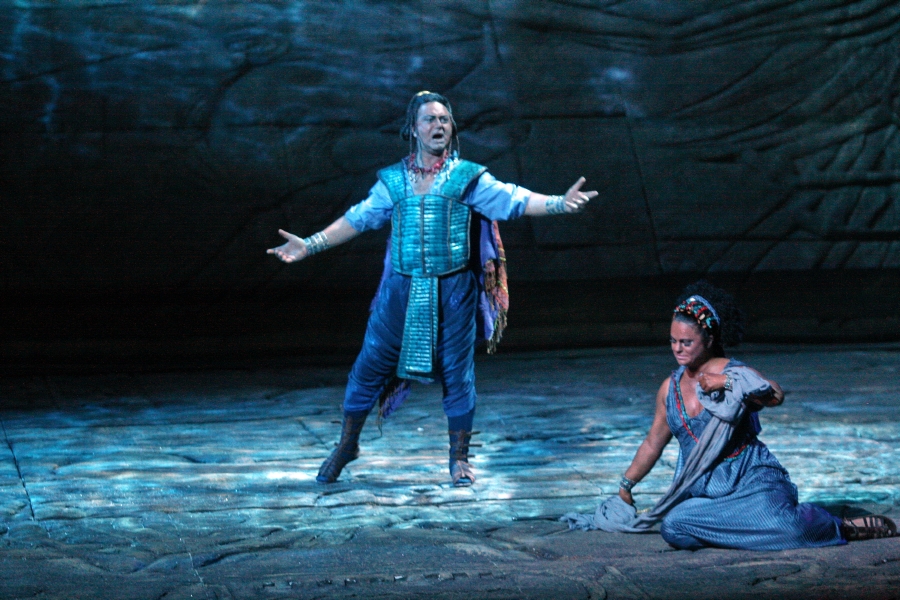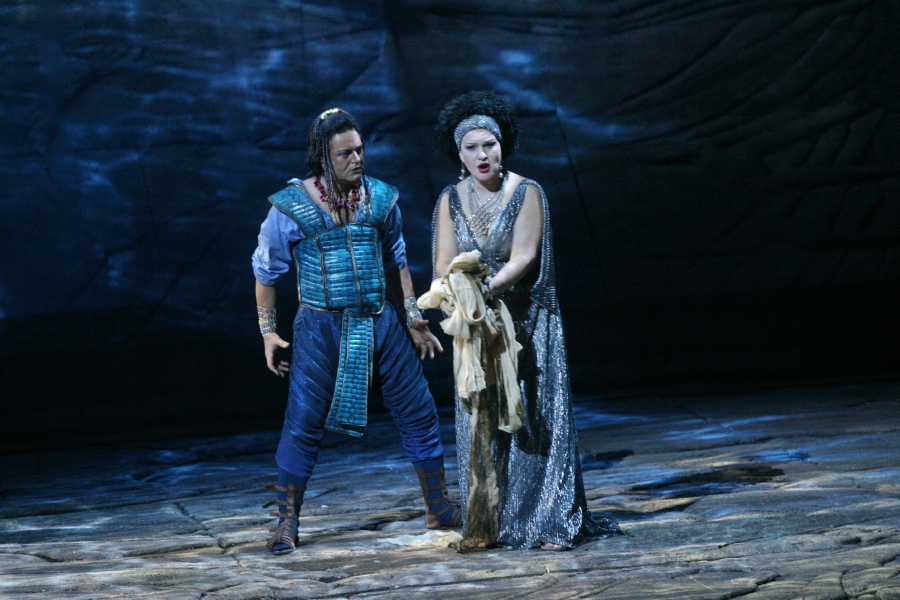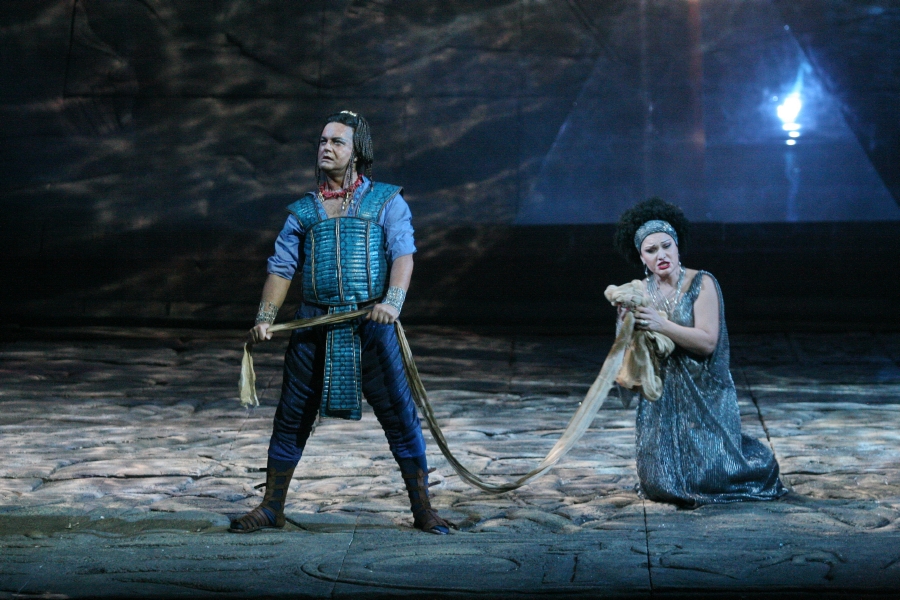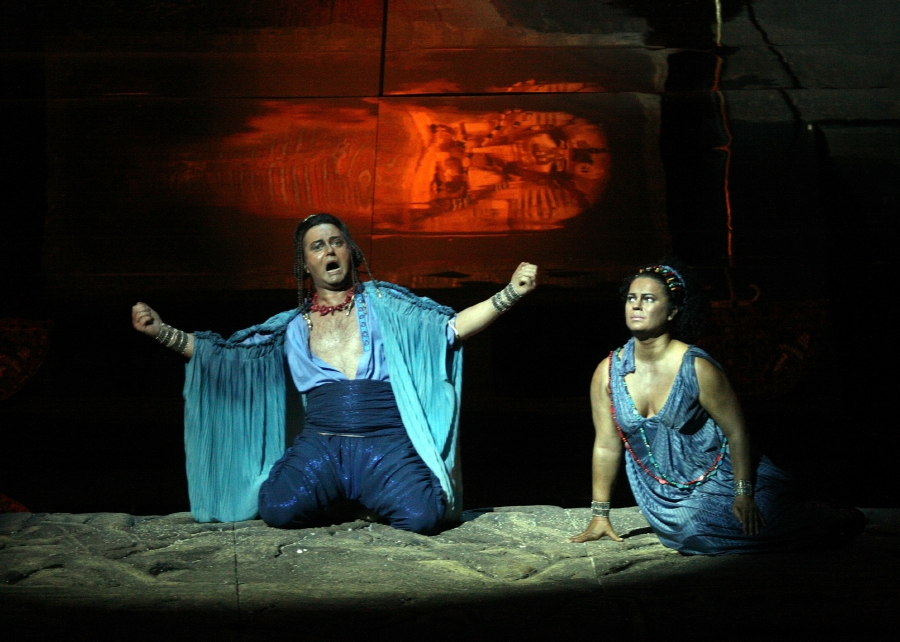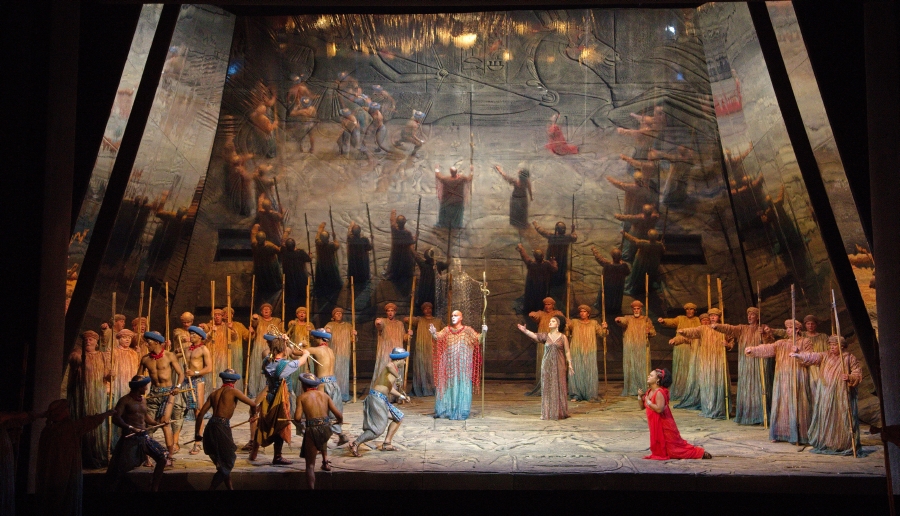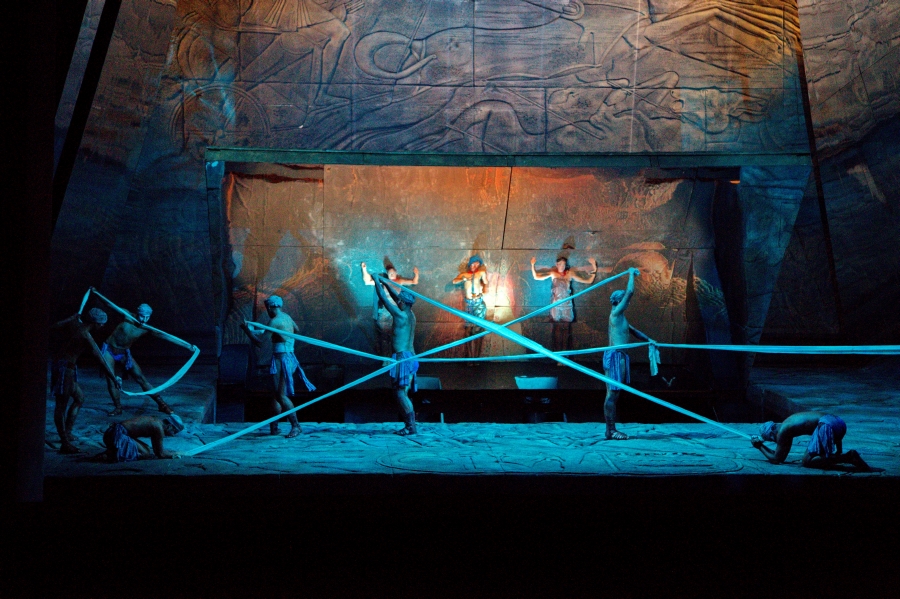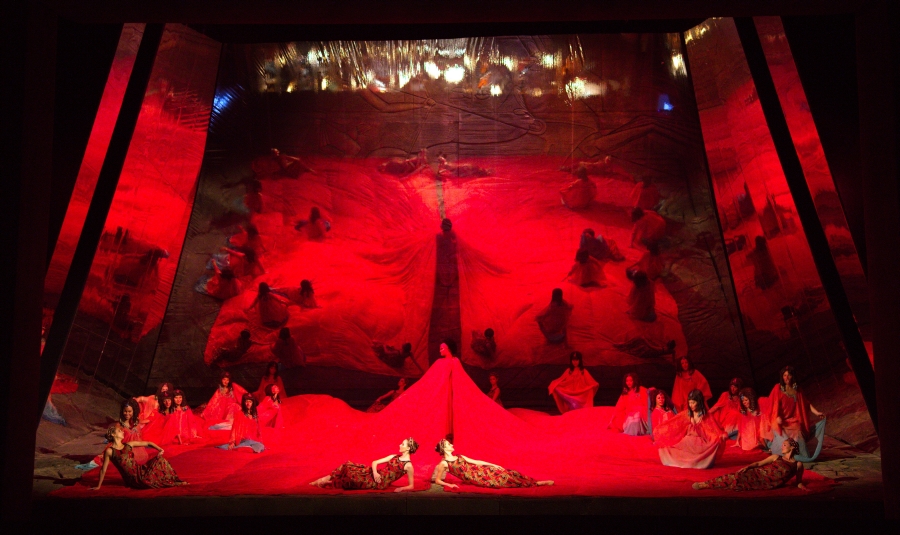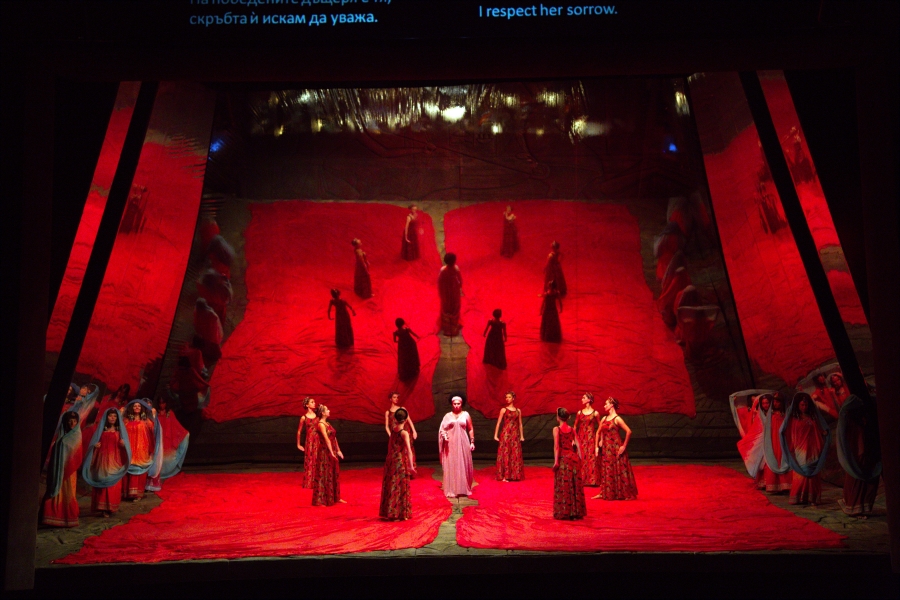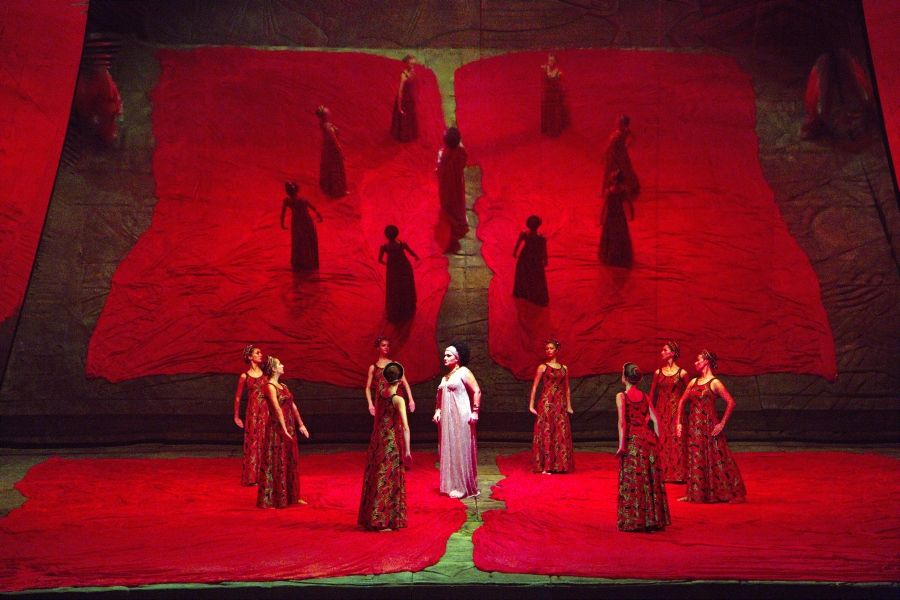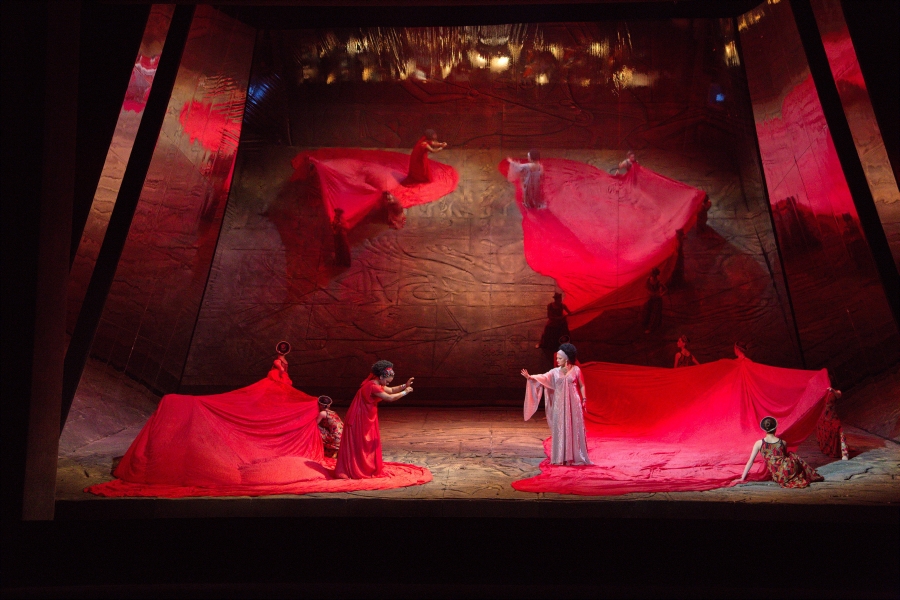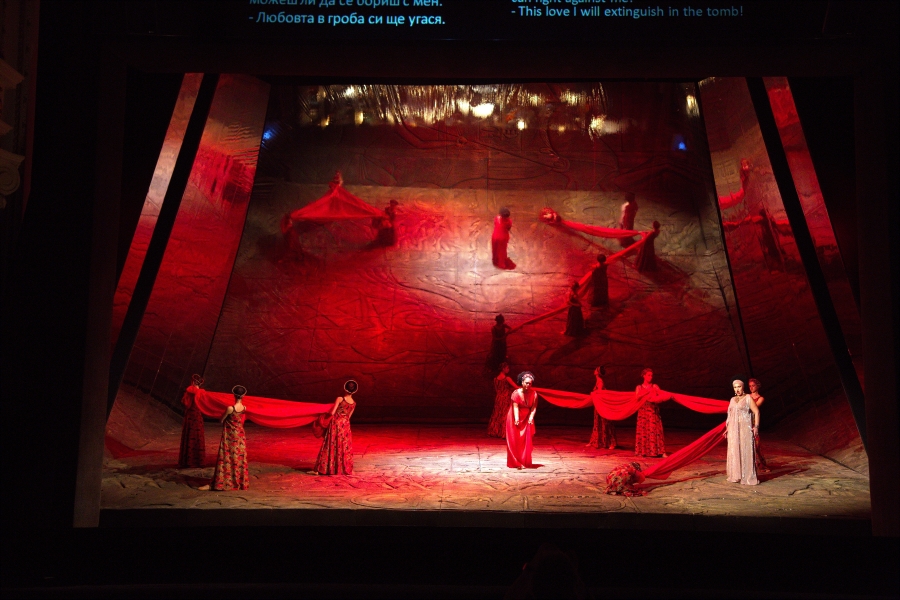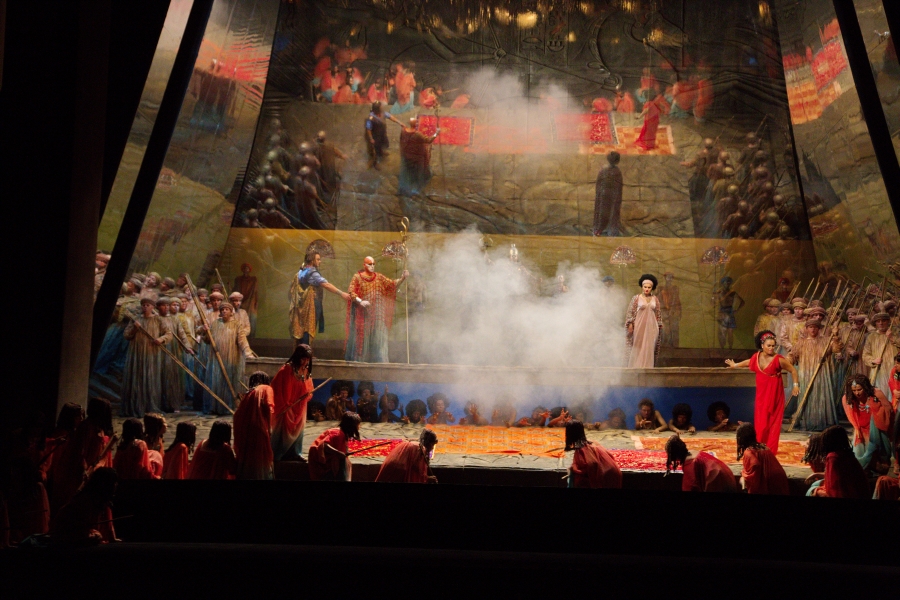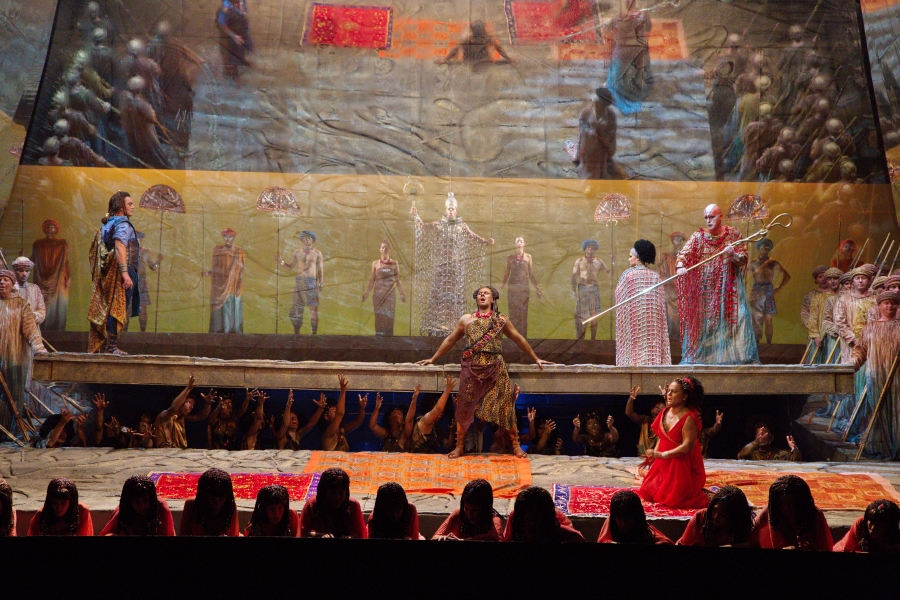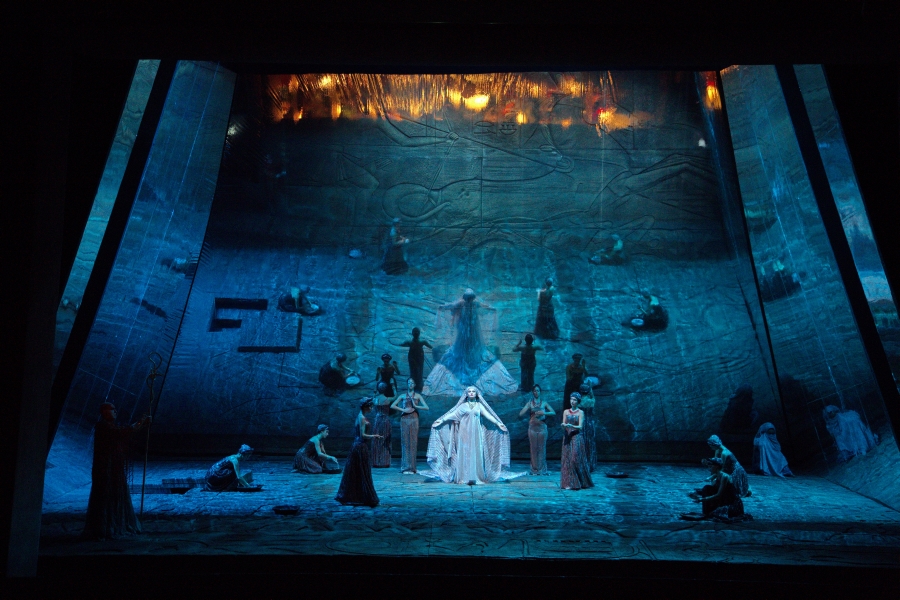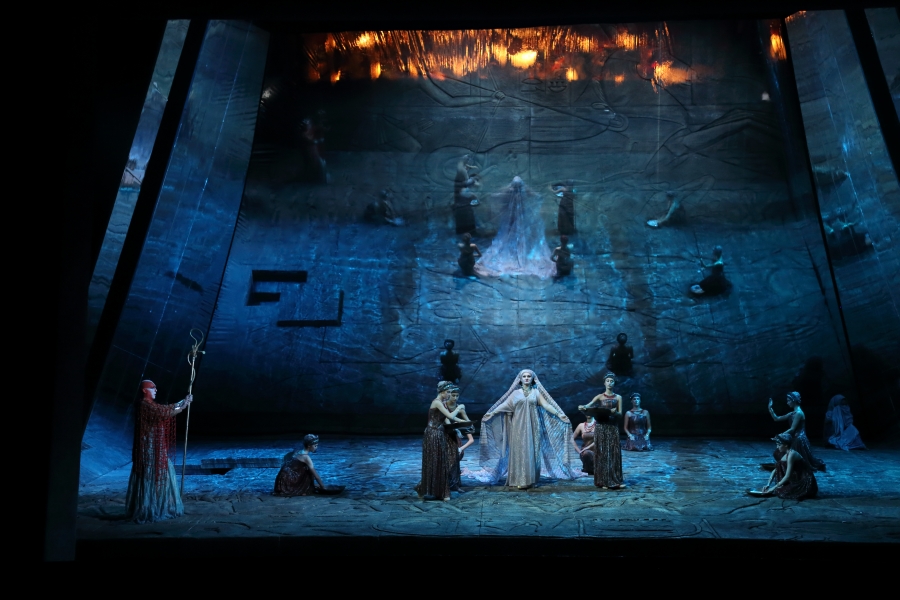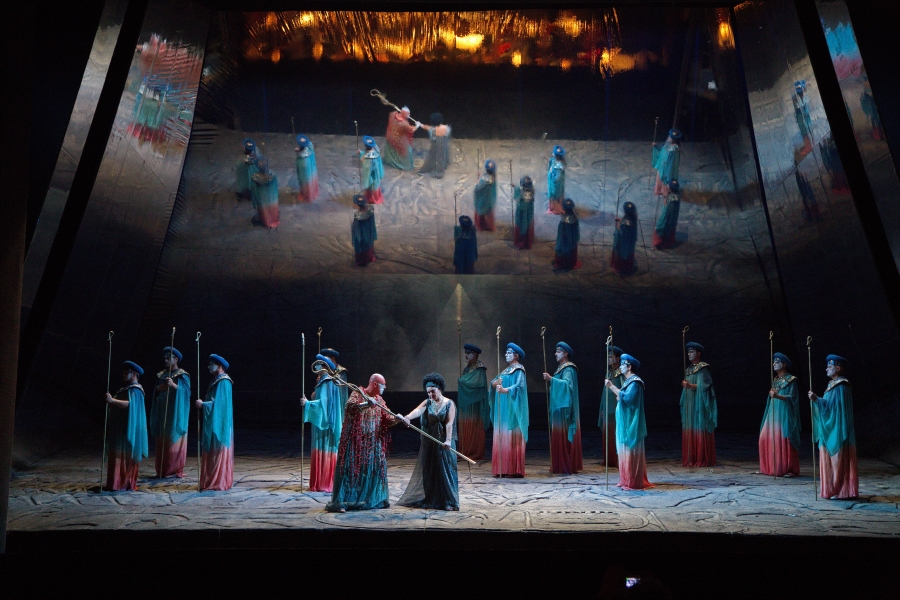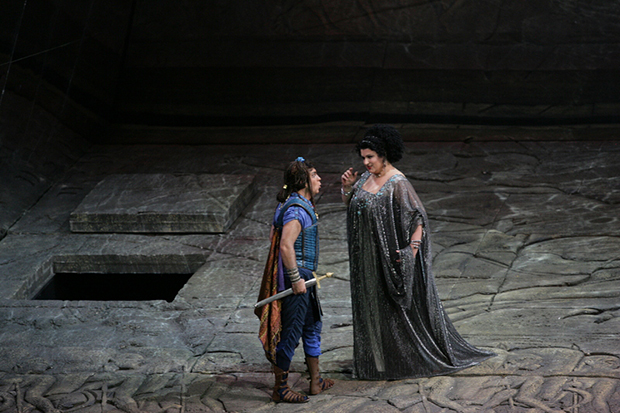Hugo de Ana presents Verdi’s masterpiece as a quartet of personal dramas
After the phenomenal success at the premiere at the jubilee 200th Аnniversary of Giuseppe Verdi in 2013 and at the following spectacles, the magnetic “Aida” is again on the playbill of the Sofia Opera on 4 and 5 November at 19.00 h and on 6 November at 16.00 h.
Most of the productions since the premiere till our days place the accent on the exuberance, especially in the performance of the Triumphal march from Act II. This scene is quite often performed in the open air with the participation of elephants, camels, horses, with which it conquers the imagination even of the spectators, who are not tempted by the magic of the opera. In contrast to this cliché, established in the years, the famous Argentinian director Hugo de Ana builds his production at the Sofia Opera on the conflicts and the dramas of the four main characters – Aida, Amneris, Radamès and Amonasro. Around this tetragon turns the entire action of the work. Fascinating are the sets from Arena di Verona with the mirror stage, on which as if three-dimensionally are being projected the tempers of the separate characters. The special mirror coating quadruples visually the participants in the episode with the Triumphal march and the stage looks like full of multitude of people, which actually aren’t there. The participants in the spectacle, projected through the same surface, look mystical, as if coming out of some other reality.
The excellent performers in the different casts add to the completed look of this unique production. The three performers of Aida – Radostina Nikolaeva, Gabriela Georgieva and Bayasgalan Dashnyam build in their individuality in the character vocally, as well as dramatically. As the heroic and lovelorn Radamès will embody the three tenors Martin Iliev, Kostadin Andreev and Daniel Damyanov. In the role of Amneris the audience will hear Gergana Rusekova and Ivanka Ninova, and as Amonasro – Biser Georgiev and Niko Isakov. Angel Hristov and Svetozar Rangelov are the performers of Ramfis, the King is presented by Petar Buchkov and Dimitar Stanchev. As the High Priestess the audience will hear Silvana Pravchava and Lyubov Metodieva, in the role of the Messenger will be Hrisimir Damyanov. Participants are also the ballet, the chorus and the orchestra of the Sofia Opera with conductor Velizar Genchev.
The history of the creation of the opera “Aida” is buried in mysteries and guesses already 145 years. It’s asserted that the libretto by Antonio Ghislanzoni reproduces a text of an ancient manuscript found in the desert with an Egyptian legend, deciphered by Auguste Mariette. Widely spread is the version that the work was ordered and written on the occasion of the opening of the Suez Canal. The truth is that Verdi started working on it to order of the Egypt’s Vice-King Ismail Pasha, but the concrete occasion was the opening of the first opera in Cairo, which the ambitious ruler was dreaming to turn into “Paris of the Orient”. The dates of both grandiose for their time events almost coincide, which is the probable reason for the confusion. But “detained” in the besieged by the Prussian army turned out to be the ordered and made there sets and costumes for the sumptuous production in Cairo. This brought away with nearly one year the premiere of the work of art.
For this opera of his Verdi gave up the well-known from earlier titles “scheme”, in which to the orchestra is assigned a rather illustrative role and the stress is put on the soloists. The critic Mila characterized this as “vulgarity of the traditional accompaniments”. In “Aida” things are radically different and the orchestral part has its own weight. Verdi was facing also another challenge – he tried to combine grandiose mass scenes with individualization of the characters, to pass from the mass emotions to the personal drama of the main characters. Time showed that the composer has brilliantly coped with all those challenges also because he was provoked by his main “rival” – the German Richard Wagner. It’s asserted that Verdi finally accepted the order to write “Aida”, when he learnt that if he refused, the invitation would be extended to Wagner or Gounod.
One way or another, namely Verdi put his signature under “Aida” and the work had its brilliant premiere on Christmas Eve 1871. Only six weeks later, Verdi’s newest title was welcomed with enthusiasm also at La Scala in Milan. Here, as well as in a series of European stages, where the work of genius was marching triumphantly, the composer was personally watching the setting of “Aida” – starting with the disposition of the solo instruments to the set and costume design.
